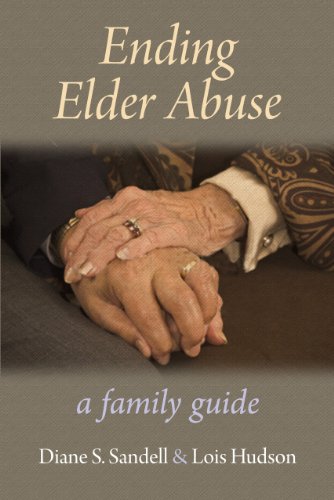Authors: Diane S. Sandell and Lois Hudson
Genre: Nonfiction
Rating: 2/5
There is so much valuable information contained in this book! I wish it had been presented in a way that didn't take away from the content. Despite the title "a family guide", this book seems to have at least two additional goals. The book starts by telling the story of Ms. Sandell's personal experience with elder abuse, which is obviously not a guide, but does make the reader aware of the horrors of elder abuse. Mingled in the family guide are encouragements to lawmakers and CEO's to take elder abuse seriously, and consider creating grass-roots groups that would be able to enact change. Instead of being a family guide this book opens with a personal testimony and combines family-specific advise with advocacy advice, and this lack of clarity left me without any clear guidance.
Genre: Nonfiction
Pages: 144
Warnings: Descriptions and images of AbuseRating: 2/5
There is so much valuable information contained in this book! I wish it had been presented in a way that didn't take away from the content. Despite the title "a family guide", this book seems to have at least two additional goals. The book starts by telling the story of Ms. Sandell's personal experience with elder abuse, which is obviously not a guide, but does make the reader aware of the horrors of elder abuse. Mingled in the family guide are encouragements to lawmakers and CEO's to take elder abuse seriously, and consider creating grass-roots groups that would be able to enact change. Instead of being a family guide this book opens with a personal testimony and combines family-specific advise with advocacy advice, and this lack of clarity left me without any clear guidance.
I have no problem with Ms. Sandell's personal testimony, because the story itself was heartbreaking, and it encourages readers to use the data in the guide portion of the book. Ms. Sandell relates how she placed her mother, Bessie Jarvis, in a nursing home nearby. One day an orderly called her to say her mother was injured. When Ms. Sandell arrived her mother was covered with bruises, including a hand-print on her face. No one had reported this incident, and she was told by the facility that sometimes the elderly bruise easily. No one wanted to accept or admit what happened to her mother. It was terrible to read, especially when I imagined something like that happening to my loved ones. However Ms. Sandell refused to let things lie, and she discovered a network of people who were working to stop elder abuse, in all its forms. She went on to affect legislation in her home state of California, and continues to this day to participate in community outreach programs.
The next few chapters are a jumbled mass of suggestions, advise, resources and coping mechanisms, in a haphazard and disconnected order. I believe the remaining chapters are meant to function has a comprehensive personal guide for caretakers when their elders can no longer live alone. However the formating in these chapters is variable, and the content is not organized. I feel the later chapters in this book could benefit greatly from rewriting.
All together, this book was only a partial success. The first few chapters made me aware of elder abuse as a systematic and absolutely awful tragedy. They also left me with an urge to do something to affect positive change in this dire situation. However, the "guide" portion of this book was highly confusing, and left me with no clear idea about what I could do. There was some very useful advice for how to assess long-term facilities, but they were hidden in the back of the appendix!

No comments:
Post a Comment